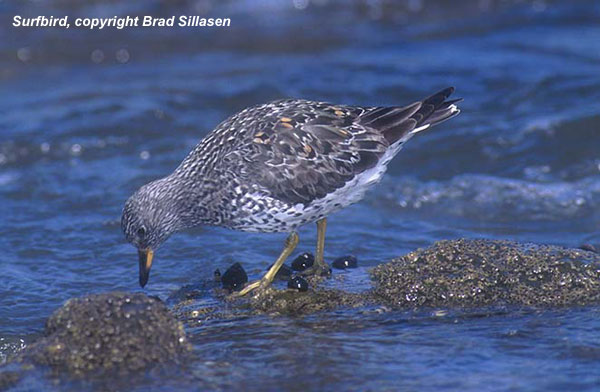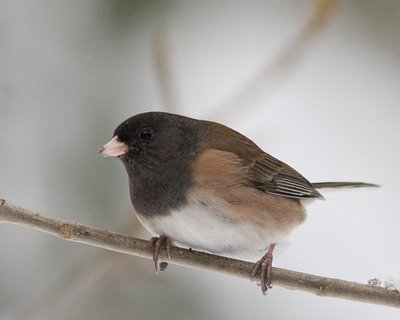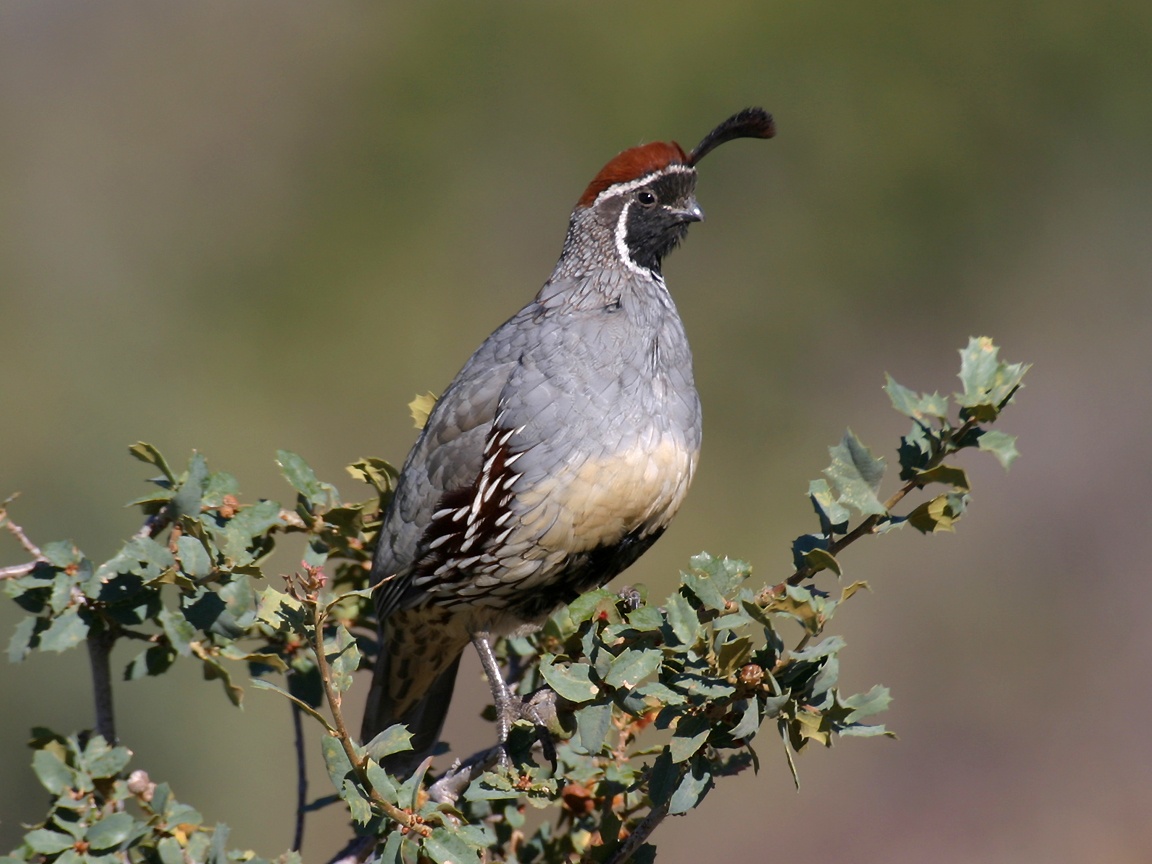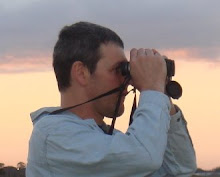
Black-throated Sparrow
Image Credit: Panoramio
I had a few days off last week for some business on the left coast. Although I lived in San Fran for a few years during my post-doc, I never found much time to bird. As such, I decided to take advantage of my trip to SoCal to do a little west coast birding. I birded in several areas: Laguna coast, Santa Monica Mountains, Ventura coast, Joshua Tree National Park and the Huntington Library Botanical Gardens.
I used two guides for the trip, The Field Guide to Birds of Western North America by David Sibley and A Birder’s Guide to Southern California by Brad Schram. The Schram guide was most helpful, as it gave detailed information on the best areas to see birds in SoCal. I highly recommend this birdfinding guide!

A Birder's Guide to Southern California, Brad Schram
With the preliminaries out of the way, let’s get to the birds!
Laguna Coast
I arrived at LAX in the afternoon. After getting my bags and picking up a rental car, I headed down to visit some old Penn State friends in Irvine. Having a few hours to spare until my friends got off of work, I decided to wander around the Upper Newport Bay Ecological Reserve. As described on the reserve’s website, Upper Newport Bay “is one of only a few remaining estuaries in Southern California and is the home of nearly 200 species of birds...The Bay is an important stopover for migrating birds on the Pacific Flyway and up to 30,000 birds can be seen on any day during the winter months.”
As I was driving along the Back Bay Drive, I was scanning the estuary for birds. My first sighting was a Great Blue Heron, followed by a Great Egret and a small flock of unID’d Gulls. Once I found a parking area, I was able to scan the water and shoreline more carefully. I spotted quite a few interesting birds, including a few lifers such as the Cinnamon Teal and Marbled Godwit.

Cinnamon Teal
Image Credit: Greg Lasley
Here are my observations:
American Wigeon
Mallard 2
Cinnamon Teal 8
Northern Pintail 10
American White Pelican 1
Great Blue Heron 1
Great Egret 2
Snowy Egret 2
Green Heron 1
American Coot 4
Black-bellied Plover 1
Willet 50
Whimbrel 1
Marbled Godwit 20
Sanderling 2
Western Gull 1
Forster's Tern 4
Black Skimmer 60
Black Phoebe 1
American Crow 3
Song Sparrow 3
The next morning, I headed down to Laguna Beach to look for Gulls and Shorebirds. I was not disappointed. After eating a tasty breakfast burrito as a local beach shack, I headed down Marine Drive to the coastal access point. The first birds sighted were a mixed flock of Western and Heermann’s Gulls. I followed the gulls down to a rocky outcropping where a number of shorebirds were feeding, including Surfbirds, and both Ruddy and Black Turnstones. I made my way about a mile down the beach before retuning to Cliff Drive. A number of birds were observed along the way.

Surfbird
Image Credit: Brad Sillasen
Here are my observations:
Brown Pelican 15
Brandt's Cormorant 5
Double-crested Cormorant 4
Pelagic Cormorant 7
Spotted Sandpiper 1
Willet 1
Ruddy Turnstone 1
Black Turnstone 11
Surfbird 14
Heermann's Gull 18
Western Gull 25
Herring Gull 1
Anna's Hummingbird 1
Brewer's Blackbird 4
Hollywood Hills
I spent most of the next day attending to business in LA, after which I fought through the lovely LA traffic toward Griffith Park. The park sits just east of the Hollywood Hills and provides a nice view of the famous Hollywood sign. You can drive up to the top, but its hard to see birds that way. Alternatively, you can make the short 20 minute hike to the top and view birds along the way. I choose the latter, taking in many birds, including a sizable flock of Bushtits, lots of Acorn Woodpeckers, and a Northern “Red-shafted” Flicker.

Red-shafted Flicker
Image Credit: IBC
Here are my observations:
Acorn Woodpecker 9
Northern Flicker (Red-shafted) 1
Black Phoebe 2
Common Raven 1
Bushtit 19
American Robin 1
Northern Mockingbird 1
Yellow-rumped Warbler 20
California Towhee 1
White-crowned Sparrow 1
House Finch 2
Lesser Goldfinch 3
Ventura County
This was the day for the BIG TRIP out to the Channel Islands, specifically to Santa Cruz Island, to see the Island Scrub Jay. As luck would have it, the trip didn’t pan out. The Santa Ana winds were blowing that day making for choppy seas. The trip was cancelled.
Rather than let the day go to waste, I decided to do some birding on the Ventura Coast and in Big Sycamore Canyon. I made two stops along the Ventura Coast, first at the Ventura Pier, and then at Emma Woods State Beach. Of the two, Emma Woods Beach was the more productive, especially along the Ventura River Trail where I spotted a large flock of White-crowned Sparrows, an Eared Grebe and a pair of Bewick’s Wrens.

Heermann’s Gull
Image Credit: Richard Wong
Here are my observations:
Mallard 8
Ruddy Duck 3
Pied-billed Grebe 4
Western Grebe 5
Eared Grebe 1
Brown Pelican 18
Great Blue Heron 1
Snowy Egret 2
Black-bellied Plover 1
Willet 60
Marbled Godwit 23
Sanderling 11
Heermann's Gull 30
Western Gull 50
Osprey 1
American Kestrel 1
American Coot 20
Bushtit 3
Bewick's Wren 2
Blue-gray Gnatcatcher 2
Black Phoebe 1
California Towhee 2
Vesper Sparrow 1
Savannah Sparrow 1
White-crowned Sparrow 40
House Finch 1
In the afternoon, I headed down to Big Sycamore Canyon in Point Magu State Park. As the name suggests, there were quite a few sycamores in the park. Among other birds, these trees served as home to a sizable population of Black-hooded Parakeets. The park is also home to a number of chaparral and riparian species. I observed several of these in the park, including California Thrasher, Wrentit, and Nuttall’s Woodpecker. There is also beach access just across Highway 1 where a variety of birds can be seen.

Nuttall’s Woodpecker
Image Credit: San Jose Parks
Here are my observations:
Western Grebe 3
Brown Pelican 9
Double-crested Cormorant 2
Pelagic Cormorant 2
Sanderling 12
Heermann's Gull 8
Caspian Tern 2
Black-hooded Parakeet 8
Nuttall's Woodpecker 3
Northern Flicker 1
Black Phoebe 1
Western Scrub-Jay 1
Common Raven 1
Wrentit 5
California Thrasher 1
Yellow-rumped Warbler 20
California Towhee 2
Savannah Sparrow 2
White-crowned Sparrow 2
Santa Monica Mountains - Malibu
The following morning, I headed back to LA. On the way back, I made two stops. One at Malibu Creek State Park and the second at Malibu Lagoon.
Malibu Creek Park is composed of 7,000 acres of rugged country in the middle of the Santa Monica Mountains. I hiked along the main path paralleling the creek. My destination was the old M*A*S*H site; however, due to all the birds observed during the hike, I never made it. In fact, I didn’t go much beyond the visitor’s center. Among the many birds observed in the park were Say’s Phoebe, Cassin’s Kingbird and Oregon Juncos.

Oregon Junco
Image Credit: Michael Franz
Here are my observations:
Cooper's Hawk 1
Red-tailed Hawk 2
American Kestrel 1
Merlin 2
Acorn Woodpecker 9
Hairy Woodpecker 1
Northern Flicker (Red-shafted) 1
Black Phoebe 2
Say's Phoebe 2
Cassin's Kingbird 2
Western Scrub-Jay 8
American Crow 3
Common Raven 1
Oak Titmouse 19
Bushtit 3
White-breasted Nuthatch 1
Ruby-crowned Kinglet 3
Western Bluebird 8
California Towhee 1
Song Sparrow 2
Dark-eyed Junco (Oregon) 4
Malibu Lagoon was next on the agenda. I hit the beach late in the afternoon. It was a bit breezy and there were not many people on the beach. Up near the lagoon, a number of gulls and pelicans were resting on the beach. Among the Heermann’s, Herring and Western Gulls were several California Gulls – lifers for me. My daughter made friends with a fairly tame Greater White-fronted Goose, to whom she fed some bread. Also, to my surprise, my wife spotted three Snowy Plovers. The lagoon itself was teeming with waterfowl, cormorants and waders. Notable among them were several Clark’s Grebes, a Solitary Sandpiper and a large flock of Marbled Godwits.

Snowy Plover
Image Credit: Birds & Blooms
Here are my observations:
Greater White-fronted Goose 1
Gadwall 4
Mallard 20
Northern Shoveler 12
Ruddy Duck 20
Pied-billed Grebe 6
Clark's Grebe 2
Brown Pelican 40
Double-crested Cormorant 20
Great Blue Heron 2
Great Egret 6
Snowy Egret 9
American Coot 200
Black-bellied Plover 1
Snowy Plover 3
Killdeer 1
Solitary Sandpiper 1
Marbled Godwit 60
Heermann's Gull 8
Western Gull 70
California Gull 4
Herring Gull 5
Joshua Tree National Park
Having birded the coastal areas, I decided to head inland to Joshua Tree to look for desert species. I entered the park via the north entrance, near 29 Palms. I hit most of the scenic spots indicated on the park map. Overall, the birds were pretty sparse, as one might expect. That being said, there were some excellent birds to be seen, many of which were lifers for me. The first stop was at Jumbo Rocks where I saw a lone Phainopepla. The following few stops yielded few birds. I then hiked out to Barker Dam, only to find evidence of California’s drought – no water and no birds. On the hiking trail, I spotted a small flock of Black-throated Sparrows, and my wife pointed out a Verdin. We then visted most of the other scenic spots in the park but saw nothing other than a few Ravens and some Red-tailed Hawks. Our final stop was Cottonwood Springs, which we hit about an hour before sunset. It was teeming with birds, including a large covey of Gambel’s Quail, and small flocks of Black-throated Sparrows and Lesser Goldfinch, and a nice mix of other passerines.

Gambel’s Quail
Image Credit: Richard Seaman
Here are my observations:
Gambel's Quail 20
Red-tailed Hawk 4
American Kestrel 1
Loggerhead Shrike 1
Common Raven 5
Verdin 1
Cactus Wren 4
Northern Mockingbird 1
American Pipit 1
Phainopepla 1
Yellow-rumped Warbler 2
Black-throated Sparrow 7
White-crowned Sparrow 2
Dark-eyed Junco (Oregon) 2
Western Meadowlark 1
House Finch 2
Lesser Goldfinch 8
Huntington Library Botanical Garden
The last leg of the trip, before returning to LAX, was a stop at the Huntington Botanical Gardens near Pasadena. According to the Huntington Library website, the gardens “covers 207 acres, of which approximately 120 are landscaped and open to visitors. More than 14,000 different varieties of plants are showcased in more than a dozen principal garden areas.”. As you can imagine, the gardens draws a nice variety of birds, including many hummingbirds. During my visit, I found the desert garden to be the most productive for birding. Among the many birds seen there were two exotics - Red-whiskered Bulbul and Yellow-chevroned Parakeet.

Red-whiskered Bulbul
Image Credit: Avian Resources
Here are my observations:
Mallard 4
Red-tailed Hawk 2
Rock Pigeon 8
Band-tailed Pigeon 3
Yellow-chevroned Parakeet 2
Anna's Hummingbird 5
Allen's Hummingbird 2
Acorn Woodpecker 2
Northern Flicker (Red-shafted) 1
Black Phoebe 3
Western Scrub-Jay 2
American Crow 11
Bushtit 40
Cactus Wren 1
House Wren 1
Red-whiskered Bulbul 14
Ruby-crowned Kinglet 3
Northern Mockingbird 3
European Starling 5
Cedar Waxwing 20
Yellow-rumped Warbler 8
Wilson's Warbler 1
Spotted Towhee 3
California Towhee 4
Fox Sparrow (Sooty) 1
Summary
Before I knew it, it was time to head home. But the birding was not done. On the way to LAX, I observed several White-throated Swifts circling above on the exit ramps on 405. That bought my total for the trip to 104 species, 36 of which were lifers for me. In addition, I observed several sub-species that were also lifers – the Sooty Fox Sparrow, the Oregon Junco and the Red-shafted Flicker. Incidentally, I surpassed the 300 species mark for the US on the trip, with Nutall's Woodpecker being 300. In total, I have 317 US species (472 World). Although there were many exciting birds, the highlights of the trip were the Verdin and the Black-throated Sparrows. I found that the Sibley Guide, as well as every other other guide I checked, does not do the Black-throated Sparrow justice. It was one of the most spectacularly handsome birds I have seen anywhere in the world.



1 comment:
Wow! What a nice trip,,how many days did this add up to and how many hours at the Huntington Library?
Post a Comment